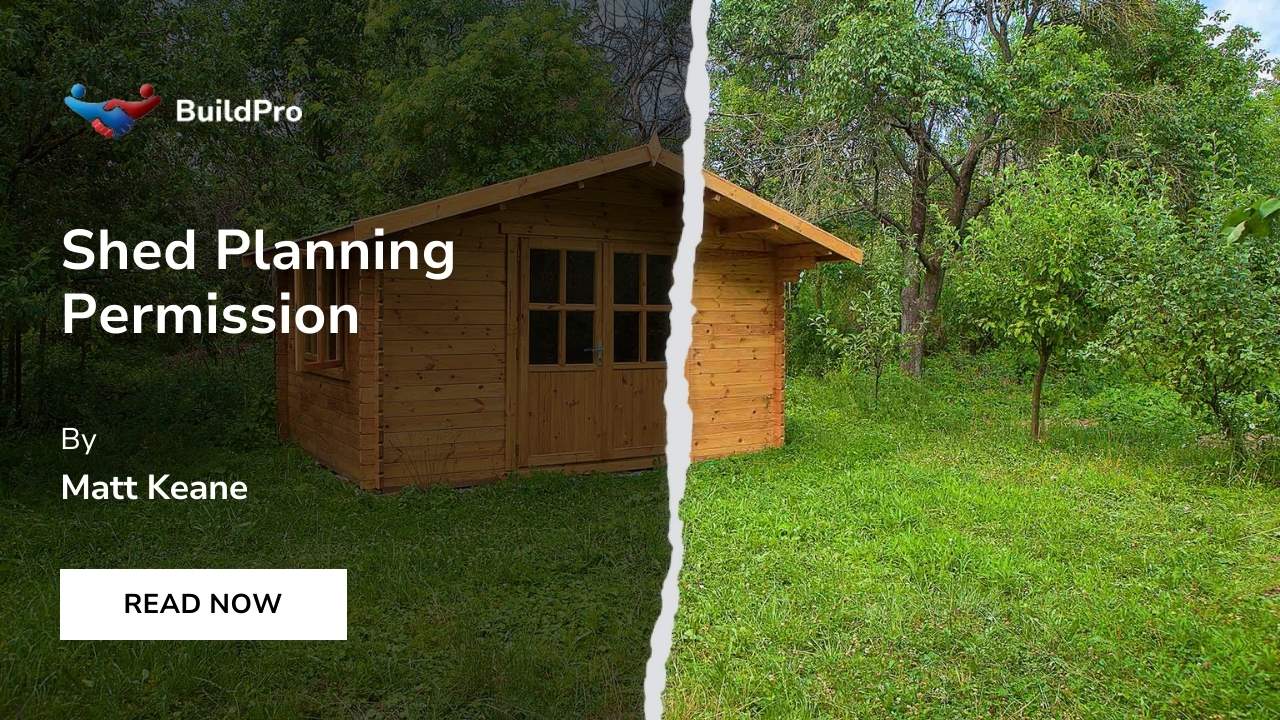Are you thinking of building a shed but unsure if you need planning permission? We get your confusion as it's a usual worry for many homeowners. With our detailed study of Irish building rules, this article aims to make these laws clearer for you.
Stick around, we're here to guide you through the ins-and-outs of shed installation permits!
When is Planning Permission Required for a Shed?
Planning permission is required for a shed if the property is located in a listed building or conservation area, there are size and height restrictions, or it is too close to boundaries.
Listed Buildings and Conservation Areas
Building a shed in the garden of a listed building or within a conservation area might require special attention. Strict rules often govern these areas to maintain their historical and architectural significance.
Any new development, including erecting small structures like sheds, could affect the character and appearance of these sites significantly. If your property falls into this category, it's essential to seek advice from your local planning authority before proceeding with any construction work.
This ensures you respect and preserve the aesthetic environment while also preventing potential legal disputes later on down the line. It is worth noting that certain criteria such as size and height restrictions may be tighter compared to other regions not classified as being within conservation areas or containing listed buildings.
Size and Height Restrictions
The size and height of your shed are important factors to consider when determining if planning permission is required. Here are the limitations you need to be aware of:
- The shed must be no taller than one storey high.
- The eave heights of the shed should not exceed 2.5 meters.
- The overall height of the shed, including any roof extensions, must not go beyond 4 meters.
Proximity to Boundaries
When it comes to shed planning permission, another important factor to consider is the proximity of your shed to property boundaries. In general, sheds should be at least a minimum distance from neighboring properties.
This requirement ensures that there is sufficient space for maintenance and repairs without encroaching on your neighbor's land. It also helps prevent any potential disputes or conflicts that may arise due to the positioning of your shed.
So, before you start building your shed, make sure you check with the local council or planning authority about the specific requirements regarding proximity to boundaries.
When is Planning Permission Not Required for a Shed?
Permitted development rights allow for sheds to be constructed without planning permission, provided that certain size and height exemptions are met. Temporary structures such as garden sheds may also not require planning permission.
Permitted Development Rights
Permitted development rights allow homeowners in Ireland to build certain types of structures, including sheds, without the need for planning permission. These rights are granted as long as specific criteria are met, such as keeping the shed within a certain size and height limit.
For example, the height of the shed should not exceed one storey or 2.5 meters at the eave heights. Additionally, the overall height of the shed should not exceed 4 meters. It's important to note that while you may not require planning permission under permitted development rights, it's still essential to adhere to any other applicable regulations and guidelines set by your local council or planning authority.
Size and Height Exemptions
The size and height of your shed can determine whether or not planning permission is required. Here are the size and height exemptions to keep in mind:
- The height of the shed must be one storey high.
- The eave heights of the shed must not exceed 2.5 meters.
- The overall height of the shed must not exceed 4 meters.
Temporary Structures
Temporary structures, such as portable sheds or storage units, are often exempt from planning permission requirements. These structures are typically designed to be easily movable and do not have a permanent foundation.
This means that you can set up a temporary shed in your garden without the need for seeking planning permission. However, it is important to note that there may still be certain restrictions in place, such as limitations on the overall size and height of the structure.
Always check with your local council or planning authority to confirm any specific regulations regarding temporary structures on your property.
Additional Considerations for Shed Planning Permission
Let's delve deeper into the various factors you need to consider when it comes to shed planning permission. We will explore design and appearance, environmental impact, as well as access and egress.
Design and Appearance
When it comes to shed planning permission, the design and appearance of your shed can play a role. Although planning permission is more concerned with the practical aspects of shed construction, such as size and height, it's also important to consider how your shed will look in its surroundings.
The goal is to ensure that the shed blends well with the overall aesthetics of your property and does not negatively impact the visual appeal of the area. While specific guidelines for design and appearance may vary depending on your location, it's always a good idea to choose a shed design that complements your home and adheres to any local architectural restrictions or guidelines.
By doing so, you can create a harmonious outdoor space that adds value and enhances the beauty of your property.
Environmental Impact
When considering the construction of a shed in your garden, it's important to be aware of its potential environmental impact. The materials used and the location of the shed can have implications for the surrounding ecosystem.
Opting for sustainable materials like responsibly sourced wood or recycled materials can help reduce your environmental footprint. Additionally, consider where you place your shed to minimize disruption to natural habitats and ensure proper drainage to prevent water runoff issues.
By making conscious choices about the environmental impact of your shed, you can create an outdoor structure that is both functional and environmentally friendly.
Access and Egress
When constructing a shed, it's crucial to consider access and egress. You should ensure that your shed is easily accessible and that there is enough space around it for safe entry and exit.
This includes having a clear path leading to the shed without any obstacles or hazards. Additionally, you may need to think about how the shed's placement will impact neighboring properties or pathways.
By carefully planning for access and egress, you can create a safe and convenient environment around your shed.
Conclusion
In conclusion, determining whether you need planning permission for a shed in Ireland depends on various factors such as the size, height, and location of the shed. Most sheds can be built without seeking planning permission, but it's important to understand the regulations and restrictions surrounding shed construction.
Checking with your local council or planning authority is always recommended to ensure compliance with the rules.
















